Daikin's Kashima Plant Forges New Path with Advanced technology
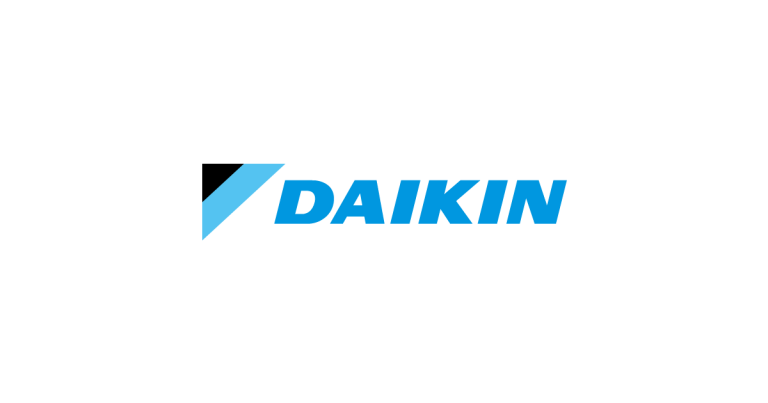
For nearly 100 years, Daikin Industries Ltd., has grown from a small metal works company in Osaka, Japan, to what it is today—a global conglomerate with facilities in 160 countries and some 80,000 employees worldwide. The company will celebrate its 100th anniversary in 2024, going from a company that focused on manufacturing “radiator tubes” for cooling engines in the aviation industry in the 1920s to being the first company in Japan to develop both refrigerants and air conditioners in the 1950s. Nowadays, it's the only global manufacturer of both air conditioning equipment and refrigerants. However, this century is just the beginning, and the company continues to evolve toward the next generation.
Advanced digital technologies—particularly HART-enabled digital diagnostic tools and predictive analytics combined with artificial intelligence (AI)—support the transition from time-based maintenance to condition-based maintenance, while improving the quality of equipment management in the plant. Thanks to this digital transformation (DX) initiative, Daikin's Kashima plant was selected as FieldComm Group's 2023 Plant of the Year.
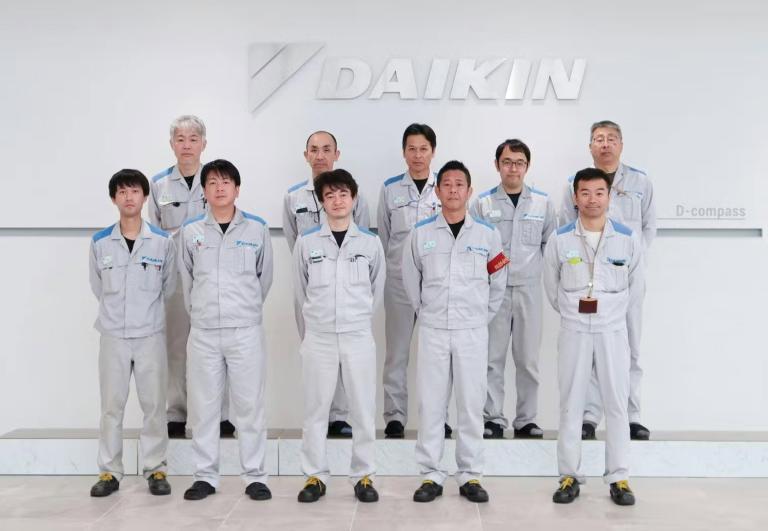
Fluorochemical facility’s digital transformation earns FieldComm Group’s 2023 Plant of the Year honors
Daikin began operations in Kashima in 1983. The company produces a wide range of fluorochemical products that use fluorite as the primary raw material. They're used in a wide variety of industries, including automobiles, semiconductor production, and the chemical industry. One of the main applications is as a refrigerant, which is also used in the company's own air conditioning equipment products, so efficient production from this raw material is essential for Daikin.
Daikin’s Kashima plant, which serves as the company’s chemical production site for the Kanto region in Japan, has expanded regularly since being commissioned 40 years ago. Over the past year, it has moved into another realm when it comes to production thanks to its digitalization efforts. At the heart of that effort is an anomaly prediction and detection system based on nonlinear regression analysis using a neural network, a type of AI technology.
The AI system is an anomaly prediction detection system using AI that is used to continuously monitor process data via a data server. It uses AI to detect abnormal behavior in processes. Past operation data is used as big data, and AI learns normal behavior of the plant. Based on that learning, it accurately predicts signs of small anomalies in current sensor values and addresses potential problems to avoid sudden production shutdowns.
Creating the solution
The Kashima plant was already equipped with diagnostics capabilities from HART valve positioners, pressure transmitters and Coriolis flowmeters. However, according to Daikin officials, the plant's diagnostic system was limited to information about the equipment.
Although 25% of the devices at the plant were HART compatible, the systems were not. Therefore, Daikin chose a Fast Ethernet-based HART converter to utilize HART information. This technology made it extremely easy to install in various DCS/PLCs without affecting the existing control system.
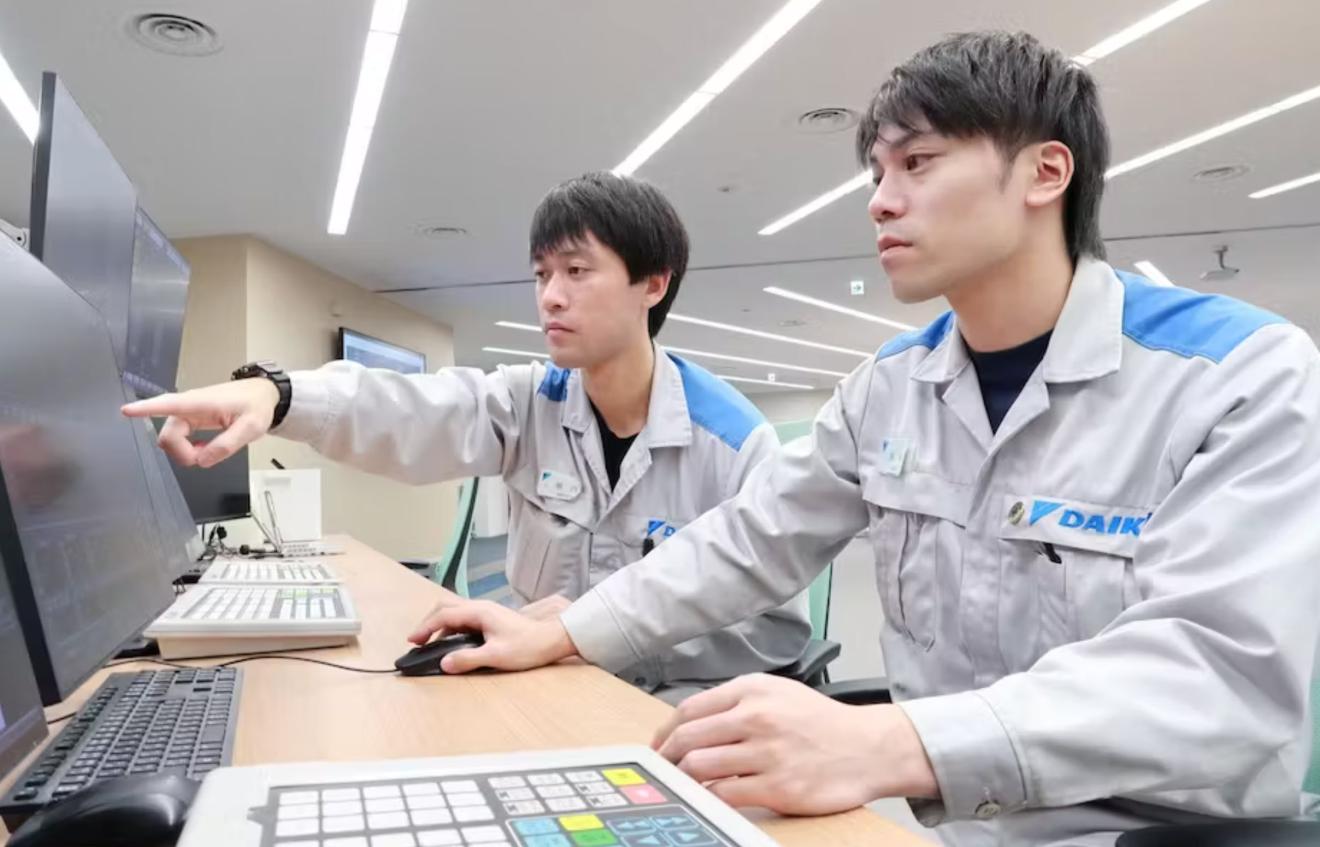
The Kashima plant's system uses HART-enabled digital diagnostics tools and predictive analytics combined with artificial intelligence.
To create a more advanced environment, Daikin selected the AI to detect wear and tear and corrosion on control valves and blocked instrument lines in real time.
By using AI to learn process values from the Kashima plant’s control system data server, the results from sophisticated diagnostic algorithms were verified.
However, Daikin officials are quick to point out that the success of AI depends on the accuracy of data it receives. Online anomaly detection systems require accurate process data, especially in batch processes. That's where HART devices made a difference, according to Masumi Yoshida of the engineering department at Daikin Industries.
“The HART signals of each device are wonderful data packed with the know-how of each device manufacturer. By having AI learn this along with various process data in the plant, it's more likely to be able to learn various signs of equipment anomalies,” Yoshida said. "By catching anomalies in the production processes at an early stage, losses can be minimized, and production can be made more efficient. I'm impressed by the new possibilities of HART devices.”
The new system is expected to be able to detect abnormal conditions in HART-compatible valve positioners, pressure transmitters and Coriolis flowmeters more accurately and in real time. In the past, experienced plant operators had to actively monitor operations to detect differences between valve openings and corresponding flow, pressure or temperature readings during normal operations.
Continuous real-time monitoring is now a reality.
“Since we can detect signs of anomalies early on, we can prepare maintenance parts and maintenance personnel in advance, which has the advantage of minimizing plant downtime,” Yoshida told Control.
Online anomaly detection system
The Kashima plant benefitted from the AI system for the last year. The AI system works by collecting data from DCS and HART converters through a data server.
According to Yoshida, the key to creating a predictive anomaly monitoring model is to imagine a failure that could occur in the plant's critical equipment, and use the knowledge of experienced plant operators to identify and select monitoring instruments that are likely to fluctuate in connection with that failure, so AI learns from the past data.
The AI system learns the correlation between the valve opening command and the corresponding variables, such as flow rate, pressure and air pressure to the actuator, and detects deviations in the correlation as a sign of an anomaly. The evaluation value is obtained from the inclusion relationship between the measured value and the confidence interval of the estimated value. This allows visualization of the degree of deviation from the normal state, and early detection of unusual behavior (signs of anomaly) due to equipment malfunctions or failures.
The AI system used in the Kashima plant is running on a server within the plant and monitors approximately 20 smart positioners in detail.
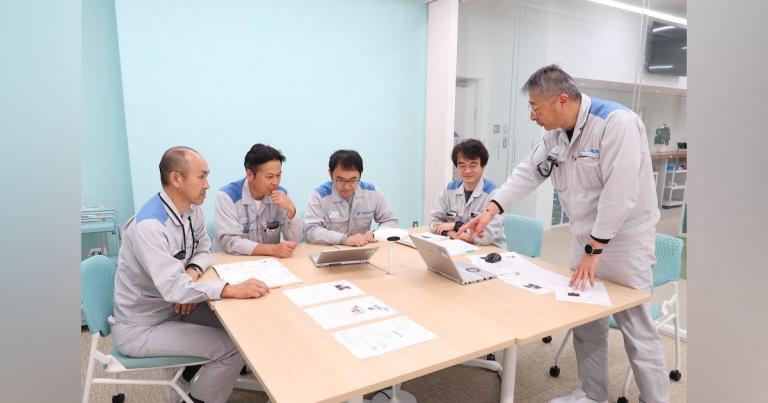
Daikin's production and engineering team led the transition from time-based maintenance to condition-based maintenance at the Kashima plant.
Future benefits
One of the reasons Daikin chose to embark on this digital transformation was to better support future generations of plant operators. It's possible for today's skilled operators to manually monitor equipment, but as those skilled operators reach retirement age and younger operators take over, it is essential to pass down knowledge and skills to continue to operate the plant at the same or better performance levels.
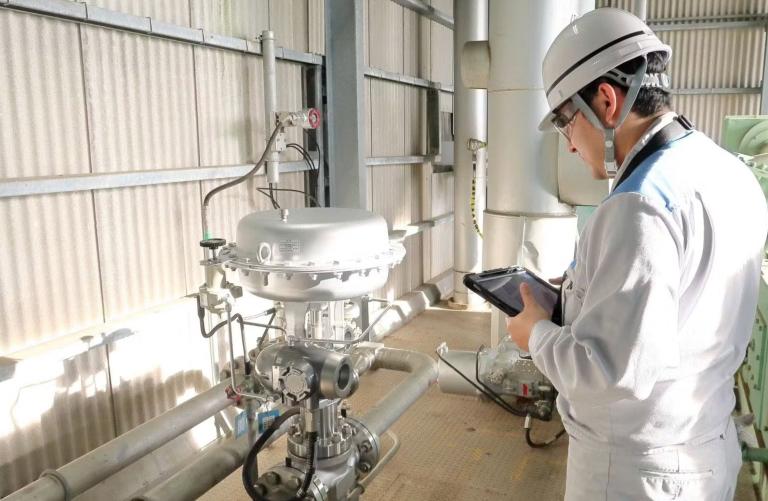
The Kashima plant's system uses HART-enabled digital diagnostics tools and predictive analytics combined with artificial intelligence.
Technology, particularly AI, is one way to ensure knowledge and skills are transferred seamlessly:
- If AI can learn and visualize optimal process operation using normal operation data, new operators can operate the plant based on displayed information.
- By using AI to learn data from HART-enabled devices and process data, it's possible to recognize anomalies at the early-warning stage and predict future anomalies.
While solidifying workflow changes across generational operators is one benefit, a more direct benefit is the savings the plant realized by preventing the loss of production opportunities caused by plant equipment troubles. Daikin estimates that in the past year the company saved approximately USD $525,000 through predictive AI detection that combines process data and HART-enabled devices. Also, condition-based maintenance conducted by Daikin over the past three years has reduced maintenance costs by approximately US $400,000.
There are already funds in the company budget for expanding the system in Kashima plant next year, and the plan is to expand it even more than last year.
Already, the company has found that by combining the HART signal of the control valve and process data into the AI monitoring system, they can expand the monitoring area of the process. In the future, by analyzing HART signals from devices such as flowmeters and pressure transmitters, together with AI, the company plans to expand the monitoring of the entire plant to reduce the risk of unplanned shutdowns to zero.
A group of Daikin officials told Control in an interview, "The efforts at Kashima plant are just the beginning. We would like to spread from here and expand it to many production sites around the world, aiming to connect globally and stabilize production."